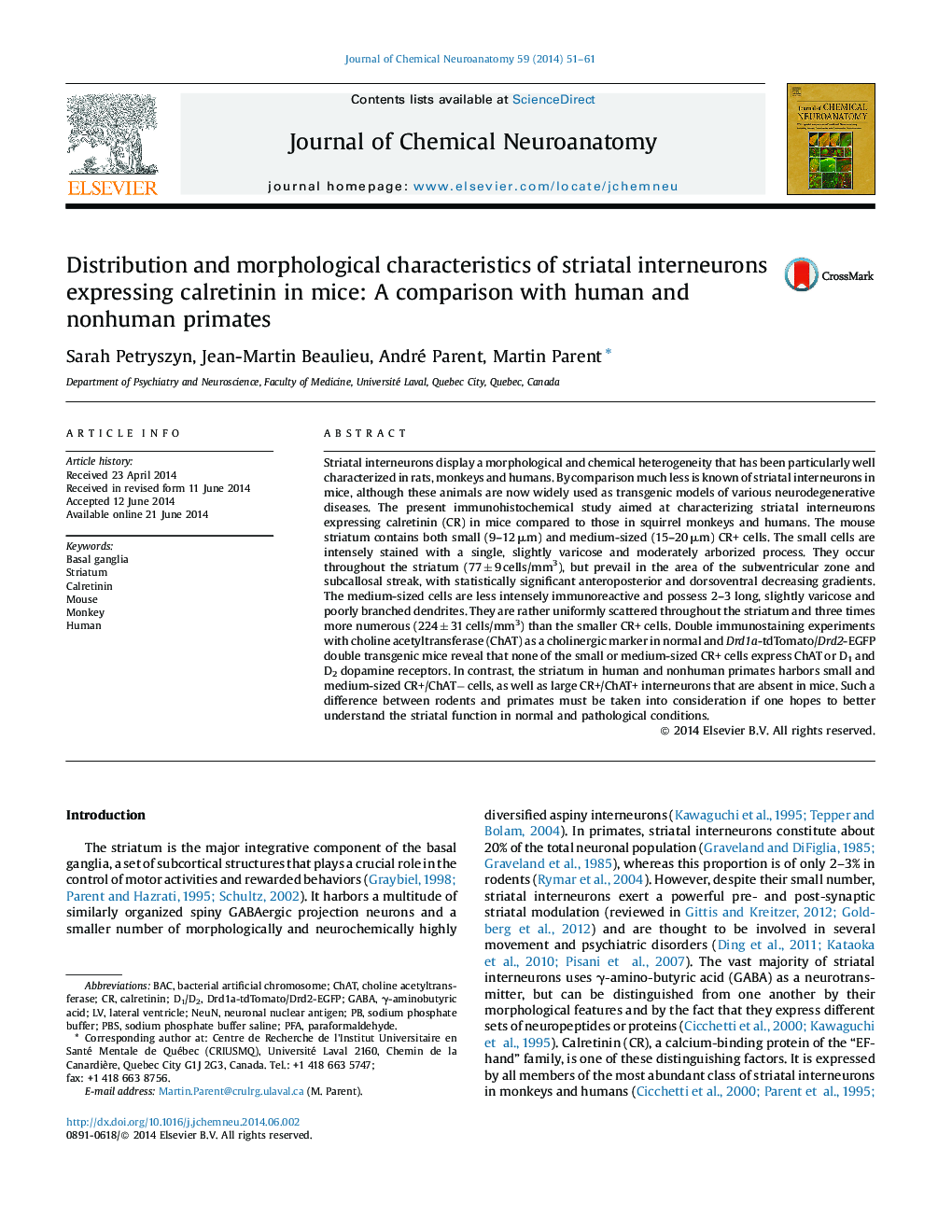| کد مقاله | کد نشریه | سال انتشار | مقاله انگلیسی | نسخه تمام متن |
|---|---|---|---|---|
| 1988821 | 1540457 | 2014 | 11 صفحه PDF | دانلود رایگان |
عنوان انگلیسی مقاله ISI
Distribution and morphological characteristics of striatal interneurons expressing calretinin in mice: A comparison with human and nonhuman primates
دانلود مقاله + سفارش ترجمه
دانلود مقاله ISI انگلیسی
رایگان برای ایرانیان
کلمات کلیدی
PBSD1/D2NeuNPFABAC - LACneuronal nuclear antigen - آنتی ژن هسته ای نورونStriatum - استریاتومγ-aminobutyric acid - اسید γ-آمینوبوتیریکHuman - انسانsodium phosphate buffer - بافر فسفات سدیمlateral ventricle - بطن جانبیbasal ganglia - عقدههای قاعدهایMouse - موشMonkey - میمونparaformaldehyde - پارافرمالدهیدChAT - چتCalretinin - کالورتینینbacterial artificial chromosome - کروموزوم مصنوعی باکتریاییcholine acetyltransferase - کولین استیل ترانسفرازGABA - گابا
موضوعات مرتبط
علوم زیستی و بیوفناوری
بیوشیمی، ژنتیک و زیست شناسی مولکولی
زیست شیمی
پیش نمایش صفحه اول مقاله

چکیده انگلیسی
Striatal interneurons display a morphological and chemical heterogeneity that has been particularly well characterized in rats, monkeys and humans. By comparison much less is known of striatal interneurons in mice, although these animals are now widely used as transgenic models of various neurodegenerative diseases. The present immunohistochemical study aimed at characterizing striatal interneurons expressing calretinin (CR) in mice compared to those in squirrel monkeys and humans. The mouse striatum contains both small (9-12 μm) and medium-sized (15-20 μm) CR+ cells. The small cells are intensely stained with a single, slightly varicose and moderately arborized process. They occur throughout the striatum (77 ± 9 cells/mm3), but prevail in the area of the subventricular zone and subcallosal streak, with statistically significant anteroposterior and dorsoventral decreasing gradients. The medium-sized cells are less intensely immunoreactive and possess 2-3 long, slightly varicose and poorly branched dendrites. They are rather uniformly scattered throughout the striatum and three times more numerous (224 ± 31 cells/mm3) than the smaller CR+ cells. Double immunostaining experiments with choline acetyltransferase (ChAT) as a cholinergic marker in normal and Drd1a-tdTomato/Drd2-EGFP double transgenic mice reveal that none of the small or medium-sized CR+ cells express ChAT or D1 and D2 dopamine receptors. In contrast, the striatum in human and nonhuman primates harbors small and medium-sized CR+/ChATâ cells, as well as large CR+/ChAT+ interneurons that are absent in mice. Such a difference between rodents and primates must be taken into consideration if one hopes to better understand the striatal function in normal and pathological conditions.
ناشر
Database: Elsevier - ScienceDirect (ساینس دایرکت)
Journal: Journal of Chemical Neuroanatomy - Volumes 59â60, September 2014, Pages 51-61
Journal: Journal of Chemical Neuroanatomy - Volumes 59â60, September 2014, Pages 51-61
نویسندگان
Sarah Petryszyn, Jean-Martin Beaulieu, André Parent, Martin Parent,